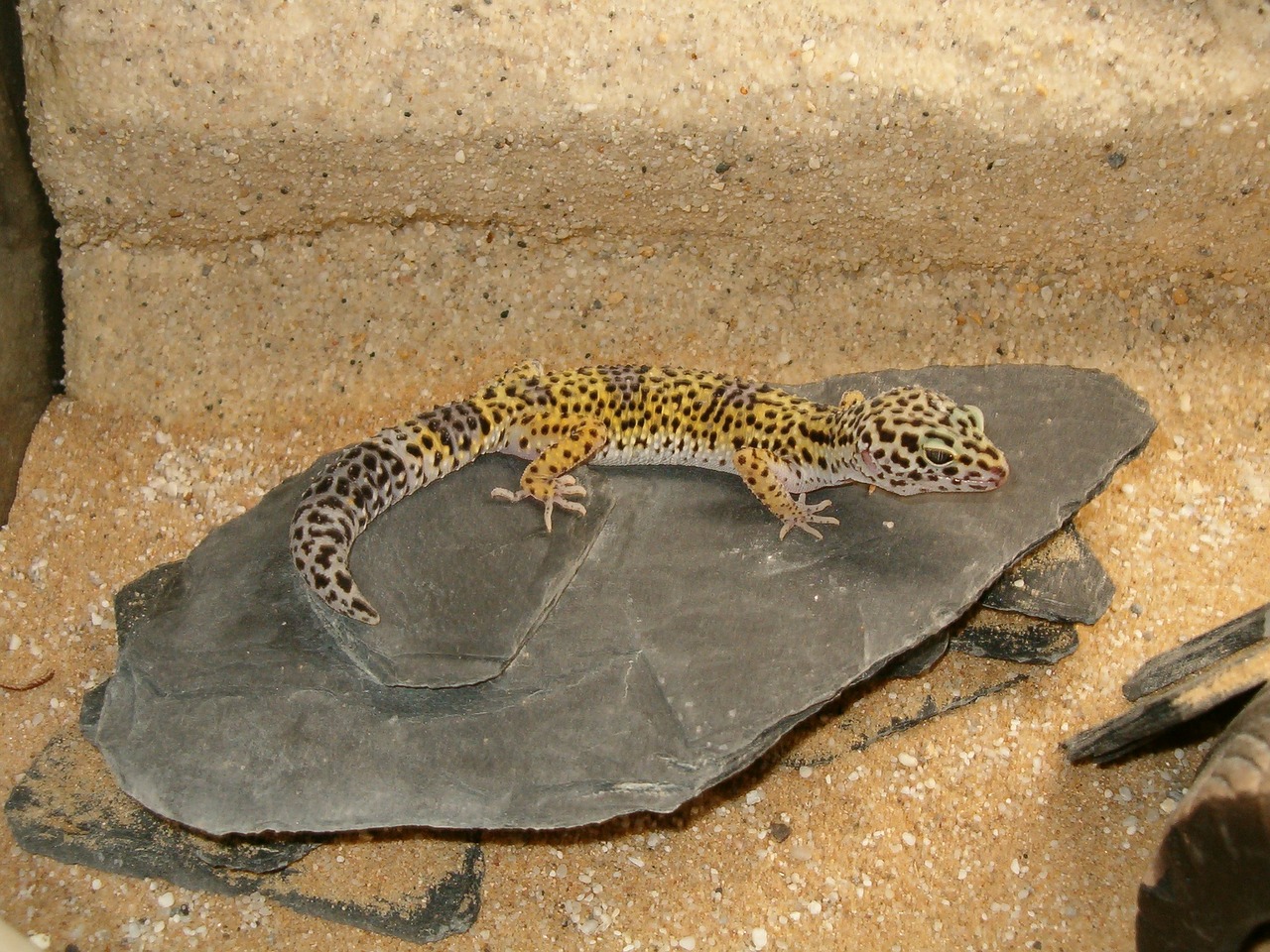Scientific classification: Geckos make up the family Gekkonidae. The African day gecko is classified in the genus Phelsuma, and the New Zealand tree gecko in the genus Naultinus.
Introduction
The Gecko is the common name for members of a family of small, harmless lizards, found mainly in tropical regions. Certain species of this family make a loud clicking noise that sounds like “gecko”; house gecko they are the only lizards that make any sound other than hissing. Geckos are often seen at night running upside down on the ceilings of houses. Some geckos have a disk on each of their toes composed of scales with many minute brushlike projections. The special size and shape of the projections allow these geckos to cling to and move across smooth surfaces using van der Waals forces
Characteristics
Geckos vary in body length from 1.5 to 25 cm (0.5 to 10 in) and often have broad, flattened heads and thick, stumpy tails. The skin is often coated with tiny, beadlike scales. In most species the two eyes are each covered by a transparent membrane kept clean by the tongue, which is thick and sticky. Most geckos feed at night on insects and are attracted to common household pests. Females usually lay two white, hard-shelled eggs. Most geckos are tan, brown, or grayish; exceptions include the day geckos of Madagascar and other parts of Africa, which are bright green with spots of orange or yellow, house gecko and the tree geckos of New Zealand, which are green or yellowish with pale markings. Geckos are not venomous, although in some regions they are feared as poison lizards. The banded gecko is the most widespread North American species. The Eurasian Mediterranean gecko is known to be a stowaway on ships and trucks; it has been widely introduced in tropical and subtropical regions, including the southern United States. The tokay of Southeast Asia, a large gecko with three different loud calls, is often sold as a pet, although it has an unpleasant temperament and is capable of delivering a severe bite.
Types of Gecko
Gold-Dust Day Gecko
Unlike most geckos, day geckos are active during daylight hours. Native to Madagascar, the gold-dust day gecko feeds on plant nectar and pollen as well as insects and other invertebrates. Geckos are distinctive for their lack of eyelids, possessing instead clear, house gecko fixed eye coverings.
Leaf-Tailed Gecko
The leaflike tail of the Australian leaf-tailed gecko probably helps camouflage this lizard. As in other geckos, the footpads of Phyllurus cornutus are covered with microscopic hairs that act as suction cups, allowing the lizard to cling to any surface, including glass. Unlike most other reptiles, which have overlapping scales, the gecko’s scales lie flush against each other, making a velvety surface. Geckos have catlike eyes with vertical pupils and a clear protective spectacle, house gecko or lens, instead of movable lids. They are generally active at night and feed on small insects. Most geckos have a voice and can click, chirp, or bark.
Scaly Alligator Lizard
Named for their shape and tough, scaly exterior, 45 species of alligator lizards can be found in British Columbia, the western United States, and Central America. There are tree-dwelling and ground-dwelling alligator lizards. Their outer skin is designed to be tough, as well as flexible enough to allow the body to expand during breathing and pregnancy.
Common Lizard
The common lizard is the most northerly occurring lizard and can be found within the Arctic circle, house gecko. It does not lay eggs but gives birth to fully formed young.

